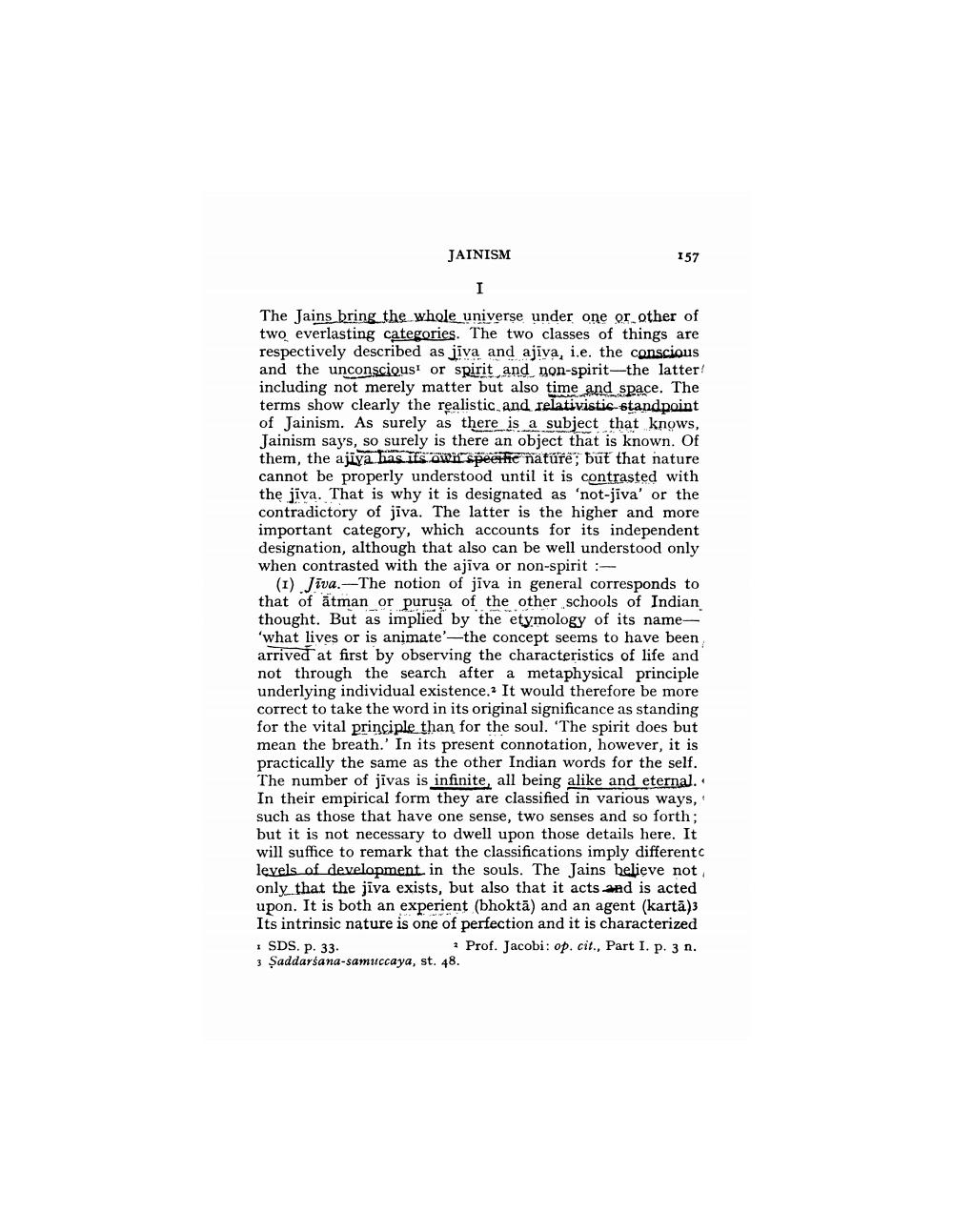________________
JAINISM
157
The Jains bring the whole universe under one or other of two everlasting categories. The two classes of things are respectively described as jiva and ajiva, i.e. the conscious and the unconscious! or spirit and non-spirit-the latter! including not merely matter but also time and space. The terms show clearly the realistic and relativistic-standpoint of Jainism. As surely as there is a subject that knows, Jainism says, so surely is there an object that is known. Of them, the ajiya has sowi speerte natüre; but that nature cannot be properly understood until it is contrasted with the jiva. That is why it is designated as 'not-jiva' or the contradictory of jīva. The latter is the higher and more important category, which accounts for its independent designation, although that also can be well understood only when contrasted with the ajīva or non-spirit :
(1) Jiva.-The notion of jīva in general corresponds to that of ātman or puruşa of the other schools of Indian thought. But as implied by the etymology of its name'what lives or is animate'-the concept seems to have been arrived at first by observing the characteristics of life and not through the search after a metaphysical principle underlying individual existence. It would therefore be more correct to take the word in its original significance as standing for the vital principle than for the soul. 'The spirit does but mean the breath.' In its present connotation, however, it is practically the same as the other Indian words for the self. The number of jivas is infinite, all being alike and eternal. In their empirical form they are classified in various ways, such as those that have one sense, two senses and so forth; but it is not necessary to dwell upon those details here. It will suffice to remark that the classifications imply different levels of development in the souls. The Jains believe not only that the jiya exists, but also that it acts and is acted upon. It is both an experient (bhoktā) and an agent (kartā)3 Its intrinsic nature is one of perfection and it is characterized · SDS. P. 33.
Prof. Jacobi: op. cit., Part I. p. 3 n. 3 Şaddarśana-samuccaya, st. 48.




